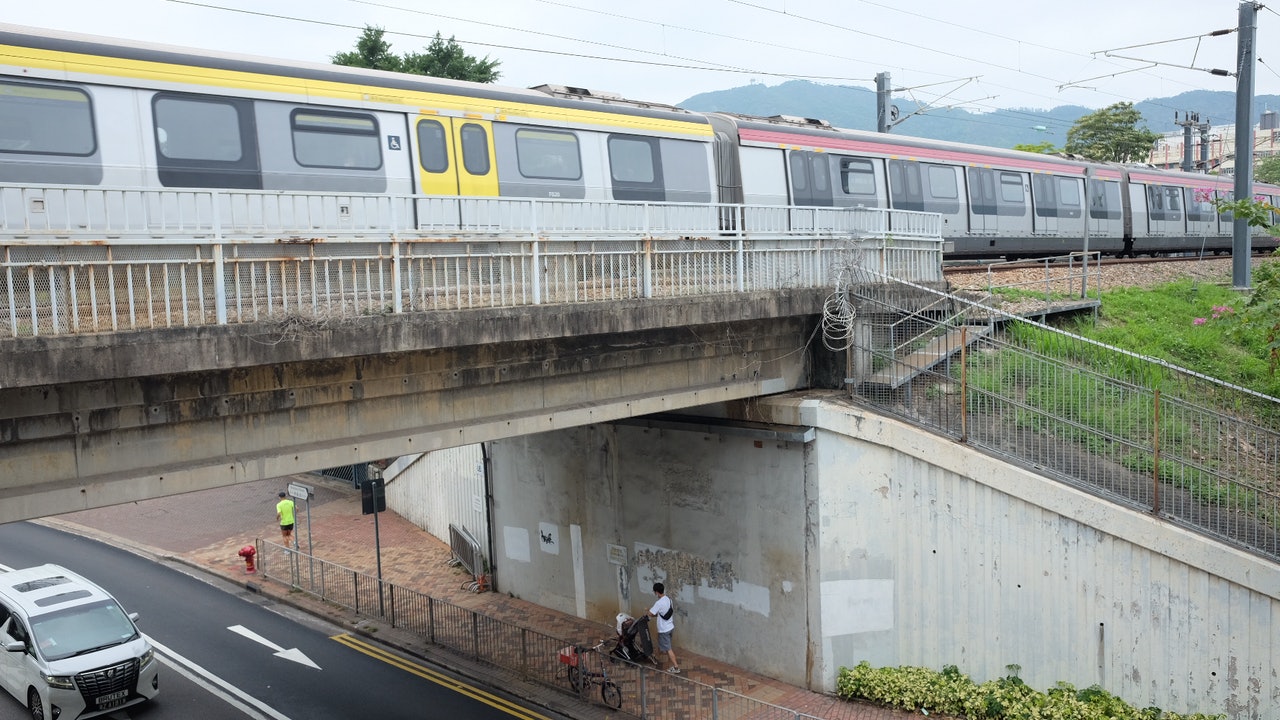Known as the "Kowloon Emperor", Zeng Zaocai often graffitied on the streets during his lifetime, and his calligraphy was all over Hong Kong, Kowloon and other places. However, the government once refused to recognize his artistic status, and some of his works were even covered with paint.
A wall under the railway bridge at Boundary Street in Mong Kok has recently peeled off white paint, revealing the handwriting of Zeng Zaocai. Some non-governmental organizations believe that there are not many "Kowloon Emperor" works left in Hong Kong. Precious, urge the government to attach importance to folk public art.
The non-governmental documentary group "Doubt Life Goes to Die" disclosed on Facebook that Zeng Zaocai's calligraphy was found under the Mong Kok railway bridge.
(network map)
Accidentally found on Boundary Street
In a documentary way, civil organizations in different places in Hong Kong "doubt life will go away". Yesterday (31st), a member posted on the official Facebook page, saying that a member of the group recently walked along the vicinity of Hua Hui Park in Mong Kok, and when passing under the railway bridge in Boundary Street, they found After part of the white paint on the wall peeled off, a painting by the late "Kowloon Emperor" Zeng Zaocai suddenly reappeared.
After the member took a lot of photos, he compared the relevant photos on Google Arts & Cutlure online and found the whole picture of the graffiti at the original site. Therefore, he believed that the calligraphy in front of him was originally a partial font of a large-scale work occupying the entire wall. .
Part of the paint is now peeling off, allowing part of the work to be reproduced.
The group believes that there are very few works of "Kowloon Emperor" left in Hong Kong, and the part that is seen now is precious.
If this work has the opportunity to be restored, it may be a large-scale "Kowloon Emperor" public art that is rarely left in Hong Kong, and it will be very rare.
+4
Wall paint peeling due to wet weather
At the scene, the calligraphy of "Kowloon Emperor" was committed to the bottom of the bridge. There were slogans that were not allowed to stick to the wall. The fonts were covered with yellow and white paint. The weather was humid recently, and the white paint was the first to peel off to the ground. The old yellow paint immediately Oxidation cracks, and some handwritings such as "Guangdong", "British" and "Cai" can be seen again.
Zeng Zaocai, the self-proclaimed "Kowloon Emperor", has used a brush to write graffiti in Chinese characters on lampposts, electrical boxes and walls in Hong Kong for decades.
The text on the calligraphy is arranged in a square, and the two characters "King Emperor" are written in the middle.
From time to time, Zeng Zaocai also wrote words such as "New Chinese Emperor Zeng Ji Cai", and his handwriting spread all over Kowloon City, Ying Pun, Mong Kok, Sau Mau Ping, Wong Tai Sin, Central, Wan Chai and other places.
After Zeng Zaocai's death, the calligraphy was auctioned to 500,000 yuan
Zeng Zaocai died of a heart attack in 2007. Many of his "calligraphy" paintings have faded. The government has always refused to recognize his artistic status, and has covered it with paint many times. In 2010, the government finally agreed to keep the original site of the Star in Tsim Sha Tsui. The stone pillars on the pier and the calligraphy on the lampposts next to the San Shan Guohuang Temple in Ping Shek Village are covered with plastic. The rest of the works have no protection measures, and some works have been covered with paint, such as a children's playground on Kwun Tong Road. The electrical box was originally painted with white paint by Zeng Zaocai during the renovation project, and the font was covered. Afterwards, the LCSD quoted the Architectural Services Department as saying that the contractor of the project had mistakenly used the paint to cover the ink on the electrical box. For feasible remedies, we will strengthen liaison with the engineering department in the future to remind contractors or project contractors not to wash or cover the ink stains left by Tsang Chiu Choi in the premises managed by the LCSD.
Hong Kong people are not the only ones who appreciate Zeng Zaocai's calligraphy. The 2003 Venice Biennale invited Zeng Zaocai to exhibit his works, the first Hong Kong person to be invited.
Two years after the death of the "Kowloon Emperor" Zeng Zaocai, Sotheby's auctioned a piece of Zeng's "Calligraphy", which was finally won by an Asian collector for 500,000 yuan.
Google has also established the "The Life and Art of Tsang Tsou-choi" online museum for Zeng Zaocai, where you can now view his works on the streets with online photos.
hk01 is making enquiries to the LCSD.
Kowloon Emperor Zeng Zaocai's "Calligraphy" was suspected of being used as a propaganda and was crossed. The Highways Department has called the M+ Museum | The first batch of exhibits exposed the Kowloon Emperor's calligraphy takes the lead to focus on social and cultural changes. The audience is more open-minded "Kowloon Emperor" Zeng Zaocai's calligraphy treasure unearthed in Kwun Tong, a friend and art critic who was unearthed in his lifetime urged proper conservation
01 Community









